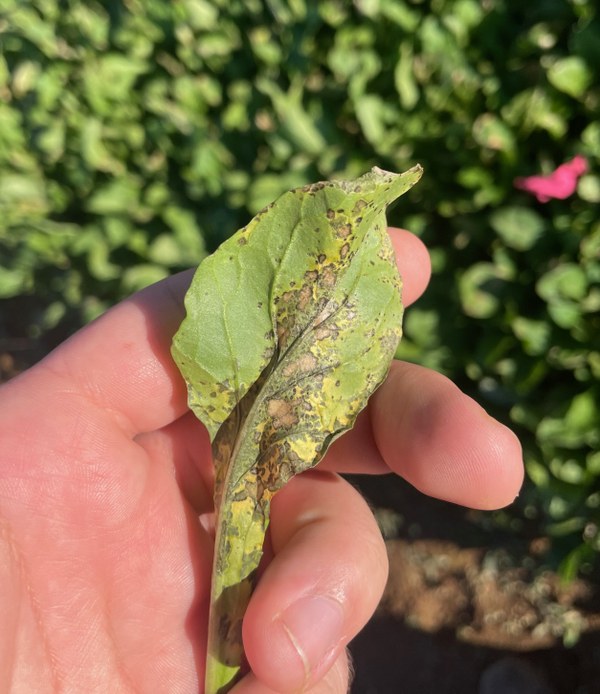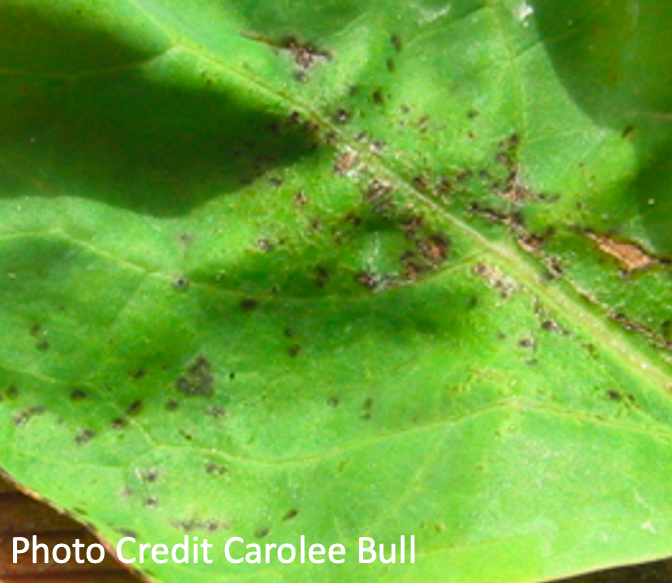Bacterial Diseases of Crucifers
The economic threshold level for crucifers also known as brassica leafy greens is low, as growers depend on the foliar health & quality of these crops for wholesale. Plant pathogenic bacteria threaten the foliar health of these leafy greens and have become a significant limitation of production in recent years.
Common Bacterial Diseases & Casual Agents
Bacterial blight, Pseudomonas cannabina pv. alisalensis

Bacterial blight, (P. cannabina pv. alisalensis) can be identified by small chlorotic-bordered lesions that spread quickly. (Photo Credit: Cameron Cedeno)
Leaf spot or pepper spot, Pseudomonas syringae pv. maculicola

Pepper Spot, (P. syringae pv. maculicola) looks as though somebody sprinkled table-pepper on leaves.
Black rot, Xanthomonas campestris pv. campestris

Black rot (X. campestris pv. campestris) is recognized by a V-shaped lesion originating at the leaf margin.
These pathogens can enter the host plants through insect or mechanical wounds and natural leaf openings, often reaching plants through irrigation or splashing rain. The pathogens survive in the soil and infected plant debris, so plantings in fallow fields are at risk of re-infection.
Hosts
These bacterial pathogens have a combined wide range of brassica hosts (arugula, broccoli, radish, turnip, cabbages, collards, mustards, bok choy, kale, cauliflower, etc.), but individually may not be pathogenic on each of these hosts.
Management Strategies
Crop rotations with non-hosts can reduce holdover inoculum from an infected crop to the next. Plant spacing may help reduce humidity and spread of the pathogen. The pathogens are seedborne and planting high quality seed is recommended.
Interested in having your brassica leafy greens surveyed?
The Northeast Arugula Team (NEAT) was formed in response to grower inquiries about bacterial diseases of arugula and other brassica leafy greens. With funding from Northeast SARE we are seeking to identify diseases on brassica leafy greens in New Hampshire, New York, Pennsylvania and Vermont. NEAT is a collaborative effort between Penn State University, Cornell University, University of New Hampshire, and University of Vermont. You can read more about our team and project at our page here: https://plantpath.psu.edu/research/labs/bull/research/neat
If you are in Pennsylvania, we are willing to come to your farm to survey your brassica leafy green plantings for disease or other issues limiting production. To express interest in sending samples for identification or to schedule a survey please contact:
Cameron Cedeno
724-732-2238 | cjc315@psu.edu
113 Buckhout Lab, University Park, PA 16802

